Despite the warning of epidemiologists about skyrocketing transmission rates, Trump tarried, writes Rajan Menon.
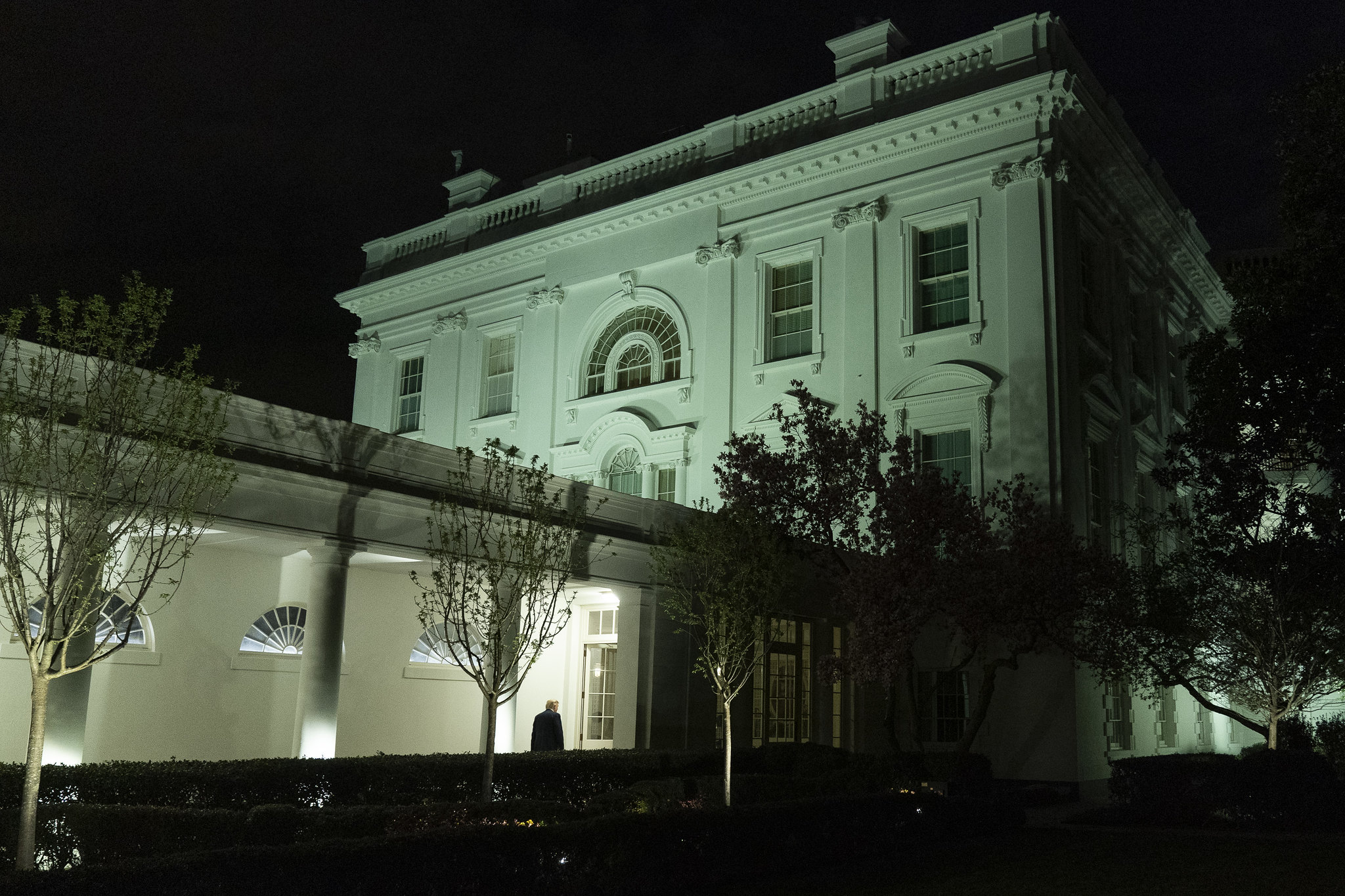
President Donald Trump walks along West Wing Colonnade to the White House residence following his address to the nation, March 11, 2020. (White House Photo by Shealah Craighead)
By Rajan Menon
TomDispatch.com
 The Severe Acute Respiratory Syndrome (SARS-CoV-2) virus, which causes Covid-19, seemed to emerge from deepest history, from the Black Death of the 14th century and the “Spanish Flu” of 1918. In just months, it has infected more than 1.5 million people and claimed more than 88,000 lives. The virus continues to spread almost everywhere. In no time at all, it’s shattered the global economy, sent it tumbling toward a deep recession (possibly even a depression), and left much of a planet locked indoors. Think of it as a gigantic stress test.
The Severe Acute Respiratory Syndrome (SARS-CoV-2) virus, which causes Covid-19, seemed to emerge from deepest history, from the Black Death of the 14th century and the “Spanish Flu” of 1918. In just months, it has infected more than 1.5 million people and claimed more than 88,000 lives. The virus continues to spread almost everywhere. In no time at all, it’s shattered the global economy, sent it tumbling toward a deep recession (possibly even a depression), and left much of a planet locked indoors. Think of it as a gigantic stress test.
Doctors use stress tests to assess the physical fitness of patients. Governments use them to see whether banks have enough cash in reserve to honor their obligations to depositors and creditors in economic crises. The International Monetary Fund conducts stress tests on national financial systems. Now, like several other countries, notably Italy and Spain, the United States faces a different, far tougher stress test imposed by Covid-19. The early results are alarming.
Since the first infection in the U.S. came to light in the state of Washington on Jan. 20, the disease has spread across the country at a furious pace. Hospitals, especially in New York City, have been deluged and are already at the breaking point. And things will get worse — and not just in New York. Yet the most basic necessities — protective masks, gowns, rubber gloves, and ventilators — are so scarce that they are being reused, further increasing the risk to healthcare workers, some of whom have already contracted Covid-19 from patients. The experiences of China, Italy, and other countries suggestthat the disease will take the lives of many of these brave people; indeed, some here have already paid the ultimate price.
And this pandemic will subject our political system, economy, and society to a set of stress tests into the distant future.
The ‘Wartime President’
By mid-January, the news from China made it obvious that the virus would spread across borders and soon reach the United States. The sheer volume of travel between the two countries should have made that reality all too obvious. Nearly 3 million Chinese visitors came to this country in 2018 and 2.5 million Americans, counting only tourists, traveled to China. In fact, we now know that, in the weeks after Covid-19 was disclosed in Wuhan, China, more than 430,000 people flew here from that country, thousands of them from Wuhan itself — and this continued even after Presdent Donald Trump put his much-vaunted travel measures in place. (“I do think we were very early, but I also think that we were very smart, because we stopped China,” he nonetheless claimed.)
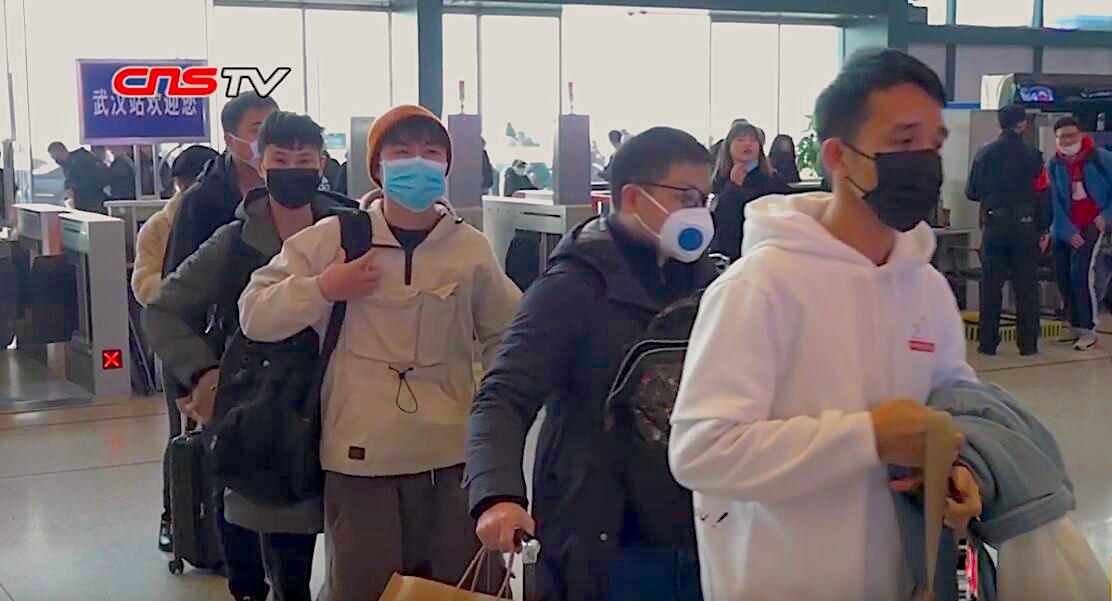
Passengers lining up in Wuhan railway station for their body temperature to be checked during the coronavirus outbreak, Jan. 24, 2020. (China News Service, CC BY 3.0, Wikimedia Commons)
In addition, Trump and his team remained unruffled, never mind that the country wasn’t remotely prepared for what was clearly coming. Despite secret intelligence reports as early as January warning that Chinese leaders were understating the coronavirus threat’s severity, the administration failed to develop any kind of emergency plan to prepare for the pandemic.
That proved to be a monumental blunder. China confirmed its first coronavirus fatality on Jan. 11. An infection was first reported in Washington state barely a week later. More than a month after that, at a Feb. 26 press conference, Trump nonetheless dismissed the seriousness of the disease, noting that seasonal flu kills as many as 69,000 in the U.S. annually. He failed to mention that the virus may have a fatality rate up to 10 times higher than the flu and that a Covid-19 vaccine was nowhere in sight. Only 15 infections had been reported here, he claimed breezily, and “when you have fifteen people, and the 15 within a couple of days is going to be down to close to zero, that’s a pretty good job we’ve done.”
Close to zero? By mid-March, infections had risen to 1,200 (which soon would prove a drop in the pandemic bucket as “America First” acquired a new meaning). Yet the president called that number inconsequential. Presidential Medal of Freedom recipient Rush Limbaugh did him one better: “Yeah, I’m dead right on this. The coronavirus is the common cold, folks.” He accused the media of exaggerating “in an effort to get Trump.”
True to form, the president was quick to personalize the pandemic. He preened about how scientific experts marveled at his grasp of the complex details of virology and the way supposedly awestruck doctors asked, “How do you know so much?” The president’s self-effacing answer: natural ability, possibly even a genetically-derived aptitude, thanks to “a great, super-genius uncle” who’d worked at MIT.
He declared himself a “wartime president,” despite the lack of any evident strategy to vanquish this particular foe. His response when governors of hard-hit states began pleading for urgent help from the federal government: “Respirators, ventilators, all of the equipment — try getting it yourselves.” The governors, he groused, were “complainers,” who should have stockpiled what they were now begging for. Thin-skinned as ever, he told Vice President Mike Pence that those like Governor Gretchen Whitmer, “the woman from Michigan,” who weren’t appreciative enough of his help didn’t even deserve to have their phone calls returned, at least by him. Inevitably, he had a Limbaugh-like conspiracy theory ready: fear-mongering Democrats were exploiting the Covid crisis to bash him. The virus, he said during a campaign rally — yes, he was still holding them in late February — was their “new hoax.” Fox News and the president’s base duly ran with this theme.
Despite the warning of epidemiologists that the virus’s transmission rate would skyrocket unless Americans were scrupulous about “social distancing,” Trump tarried (and to this day can’t keep his distance from anyone at his news conferences). He failed to use the presidential bully pulpit to disseminate this advice quickly.
Nor, despite an evident shortage of medical supplies and equipment, did he act decisively. The 1950 Defense Production Act (DPA) gives him the authority to order private companies to produce essential medical supplies and equipment, including ventilators, and then distribute them in ways that would prevent hard-hit states from outbidding each other. He rejected widespread calls to use the Act. “We’re not,” he quipped, “a country based on nationalizing our business. Call a person over in Venezuela. How did the nationalization of their businesses work out? Not too well.” Of course, no one had called for a government takeover of American companies. Trump did eventually invoke the DPA reluctantly in late March but has used it sparingly and ineffectively.
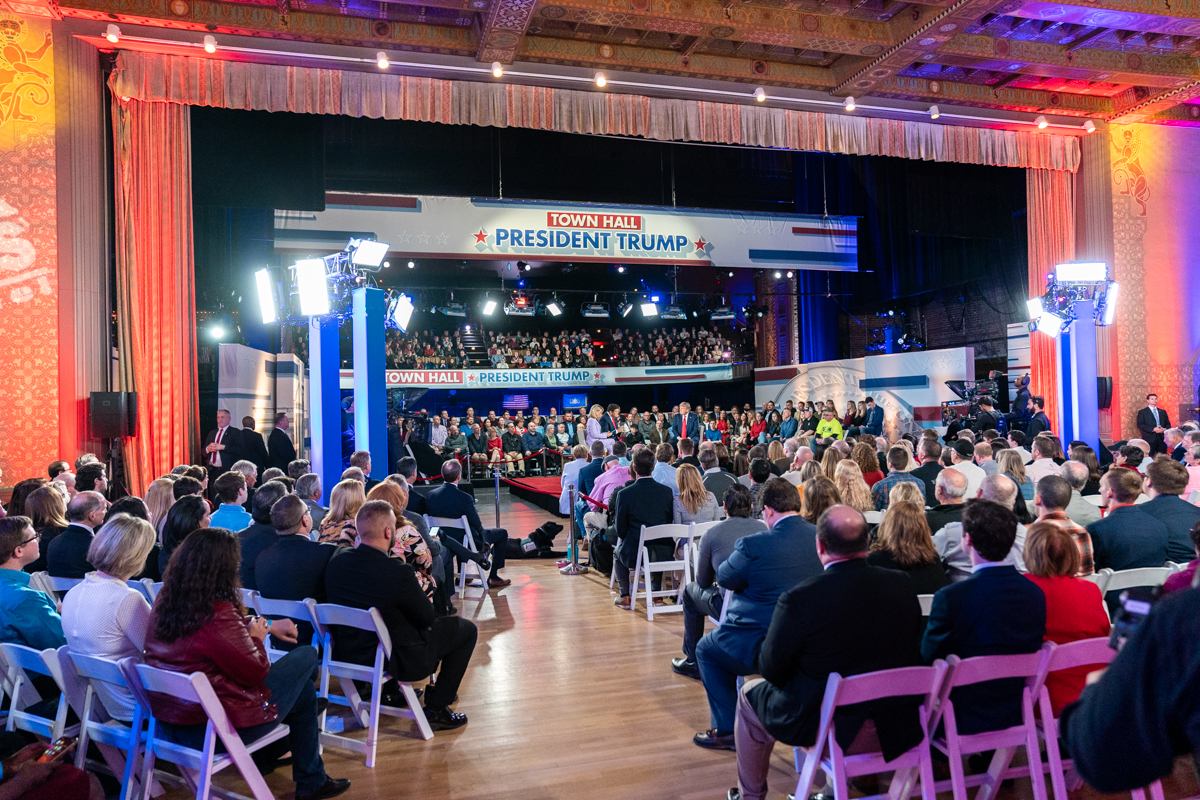
Fox News Channel town hall with President Donald Trump, March 5, 2020, Scranton, Pa. (White House, Shealah Craighead)
Continuing to downplay the Covid-19 threat, he declared during a March 31 Fox News “virtual town hall” on the coronavirus that he would love to have the economy up and running two weeks later on Easter Sunday with “packed churches all over the country.” That was, of course, a pipedream: by March 30, the Centers for Disease Control and Prevention (CDC) had already reported more Covid-19 cases — 140,904 — here than in any other country and 2,405 deaths. (And yet, in early April, Trump was still talking about the need to fill sports stadiums “sooner rather than later”; the cure, he said, cannot “be worse than the problem itself.”)
As of April 11, the CDC’s tally had risen to 492,416 infections and 18,559 fatalities, while John Hopkins University’s tracking site reported 526,296 infections and 20,463 deaths (the highest numbers in the world in both categories). Physicians and public health specialists have, however, warnedthat the toll could already be much higher given the shortage of test kits. Trump seemed finally to be grasping the gravity of the pandemic, thanks in part to the patient tutelage of specialists like Dr. Anthony Fauci, the long-time head of the National Institute of Allergy and Infectious Diseases. But put this in your no-good-deed-goes-unpunished file: on social media, radio, and television, Fauci has been pilloried by Trump fans for supposedly undercutting the president or, as one acolyte tweeted, for trying to create a “Police State Like China in Order to Stop the coronavirus.” Fauci even started receiving death threats.
Unable to stay out of the limelight, Rudolph Giuliani, evidently seeking to displace Dr. Fauci as Trump’s top coronavirus expert, took to Twitter, practicing medicine without a license and touting the anti-malarial drug hydroxychloroquine as a sure-fire cure for the disease. This despite doctors’ warnings that the drug’s efficacy was unproven and that it could have fatal results, as well as the American Medical Association’s counsel that a rush to use it could lead to hoarding and reduce its availability for treating people with ailments for which it’s actually been approved. The president has followed Dr. Giuliani’s advice on hydroxychloroquine, repeatedly hailing it“the biggest game-changer in the history of medicine.”
At a March 29 press conference, Trump finally ditched his goal of restarting the economy by Easter and asked non-essential workers to stay home until the end of April, venturing outdoors only when essential. The Covid-19 death toll could, he now conceded, end up ranging between 100,000 and 240,000, a number, he asserted, that would only prove “we all, together, have done a very good job” given that he’d heard estimates of “up to 2.2 million deaths and maybe even beyond that” if the pandemic were not dealt with effectively here. Later, he allowed that even 240,000 deaths in the U.S. could be a low-end figure. Then he again praised himself for taking decisive steps — assumedly by denying for weeks that the virus was a massive problem, predicting that it would perish in the summer heat, and assuring Americans that you could, in any case, cure it with anti-malarial drugs, which he “may take” himself. Compared to 2 million possible deaths, 240,000 was, he boasted, “a very low number.” Give him credit for the math, at least: 240,000 is indeed a far lower figure than 2 million.
Acute Economic Pain
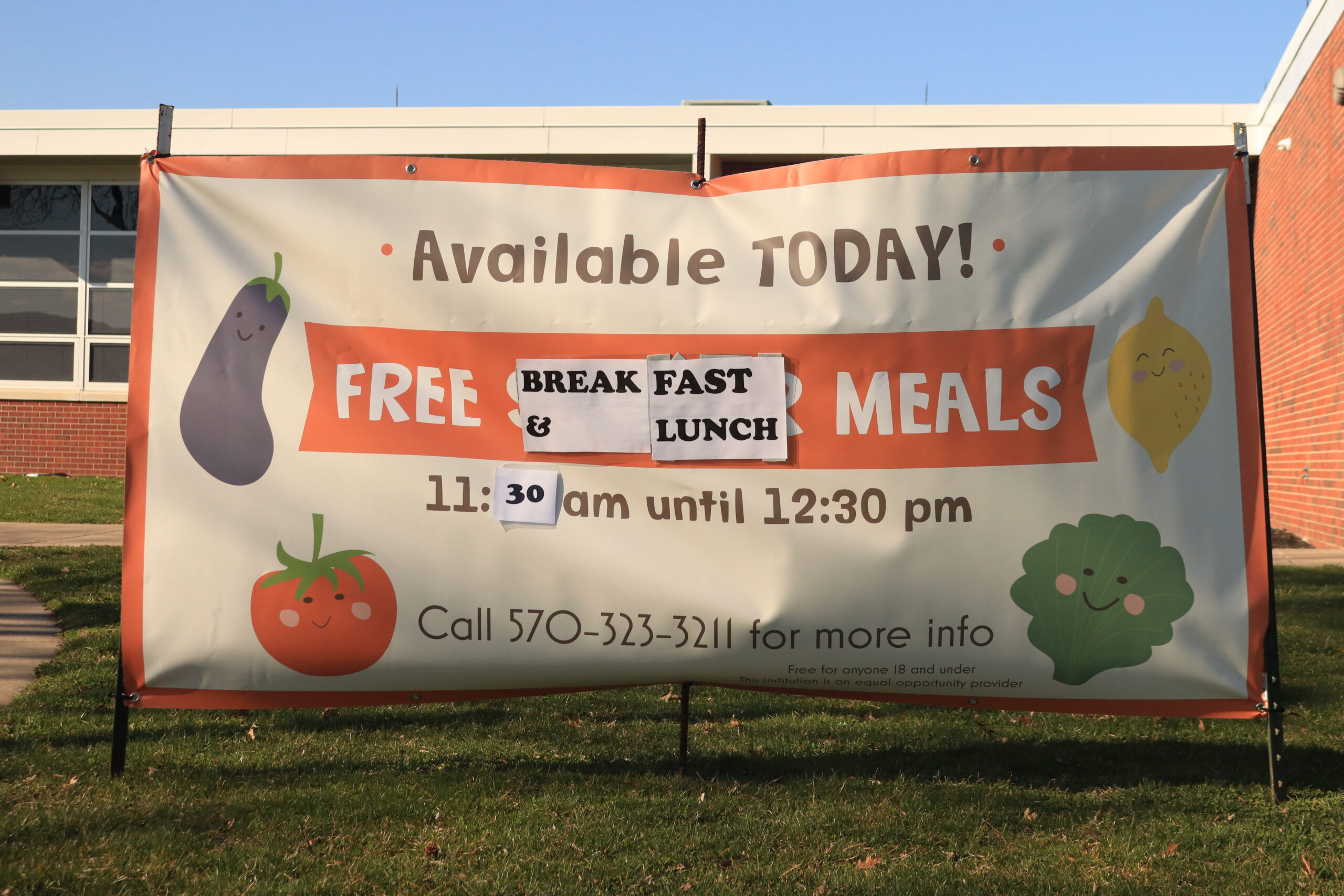
Sign outside Loyalsock Township Senior High School in Williamsport, PA. School closures due to Covid-19 in Pennsylvania affect access to meals and nutrition for students throughout the state. (Brinacor, CC BY-SA 4.0, Wikimedia Commons)
As the stock market plunged — it had lost more than a third of its value by the end of March — and it became undeniable that the fallout from the virus would cause the economy to crater, Congress passed a $2 trillion-plus Coronavirus Aid, Relief, and Economic Security (CARES) bill on March 27, which the president signed within hours. The main provisions of that mammoth, nearly 900-page piece of legislation included:
* $1,200 to people with annual incomes below $75,000;
* $2,400 to those who file taxes jointly and earn less than $150,000;
* $500 per child for households with dependent children;
* 13 weeks of unemployment compensation beyond individual state government limits plus a weekly supplement of $600;
* a 50 percent payroll tax credit up to $10,000 for businesses that continued to pay non-working employees and whose revenues have shrunk by at least 50% compared to a year ago;
* loans to small businesses to help them cover the costs of employees’ salaries and health insurance;
* a $30.75 billion “Education Stabilization Fund,” providing various forms of economic assistance to hard-pressed students;
* six-month deferments on federal student loans and the suspension of penalties for overdue payments;
* $500 billion in loans and guarantees for corporations.
These were certainly much-needed moves and $2.2 trillion was hardly chump change. Still, the number of the unemployed may far exceed current expectations as the economy more or less shuts down. Some economists estimate that the gross domestic product could eventually shrink by a staggering 30 percent, with unemployment reaching at least 32 percent, or 47 million people, a figure that would surpass the 24.9 percent peak during the Great Depression of the 1930s. The CARES stimulus package, geared significantly to big banks and big corporations, may not suffice to meet the needs of an increasing number of jobless people. At least 6.6 million had filled unemployment claims by end of March alone. By early April, the number edged close to 17 million, and millions more will follow. And who knows how much of the $500 billion allotted to corporations will be devoted to protecting workers’ jobs and benefits when less than 10 percent of it has strings attached?
Furthermore, some of the measures in the CARES Act to help the jobless expire on July 30 and others at the end of the year, although it could take far longer to truly contain the virus. The government could pony up more money, but the bill itself has no renewal clause, which means that we could be in for another grim legislative battle. Senate Majority Leader Mitch McConnell has already stated that he’ll oppose rapid follow-on legislation until the effects of the current bill are known, lest Democrats “try to achieve unrelated policy items they would not be able to pass.”
The intricately linked global economic system has broken down in just a couple of months, so time isn’t on the side of the unemployed. In addition, the maximum duration of unemployment benefits varies strikingly by state. In North Carolina, it’s only 12 weeks; in Massachusetts, 30. Likewise, the maximum weekly amount paid ranges from $823 in Massachusetts to $235 in Mississippi. Unemployment insurance certainly helps, but the Center on Budget and Policy Priorities calculates that it averages just over $300 a week nationally, covering only 46.6 percent of a worker’s former earnings. Yet if Covid-19 leaves many millions without jobs well beyond July 30th, or perhaps even the end of the year, they will have to pay for food, rents or mortgages, and utility bills, to mention just a few of the basics.
Households with incomes in the bottom 20 percent will face a particularly hard struggle, to say nothing of the 38 million people already living in poverty. Monthly rent in 2018 averaged $1,450 and monthly food costs (not counting spending in restaurants) $363. The average savings of Americans — excluding investments, retirement accounts, and homes — totaled only $4,830 that year. Unsurprisingly, approximately 27 percent of them report that may not be able to cover even a month’s worth of basic expenses; another 25 percent say that they could hang on for three months. Then what? Already, laid-off low-wage workers, who could barely meet their basic expenses when they had jobs, have become desperate, while those still employed who work in restaurants and hotels hit hard by social distancing have seen their hours cut back and their tips diminished.
No one knows just how bad things could get, how many people will succumb to Covid-19, or what heights the jobless rate will reach, but of this much we can be certain: the virus’s wave hasn’t crested yet and may not for weeks, or even months. And because the United States lacks the strong social safety nets of European countries, people with meager savings will be especially vulnerable. Apart from the trauma of suddenly losing jobs, people filing unemployment claims have already been wearied by chronically busy phones and crashing websites as unemployment offices face a tsunami of a sort never previously imagined.
Social Fabric Under Stress
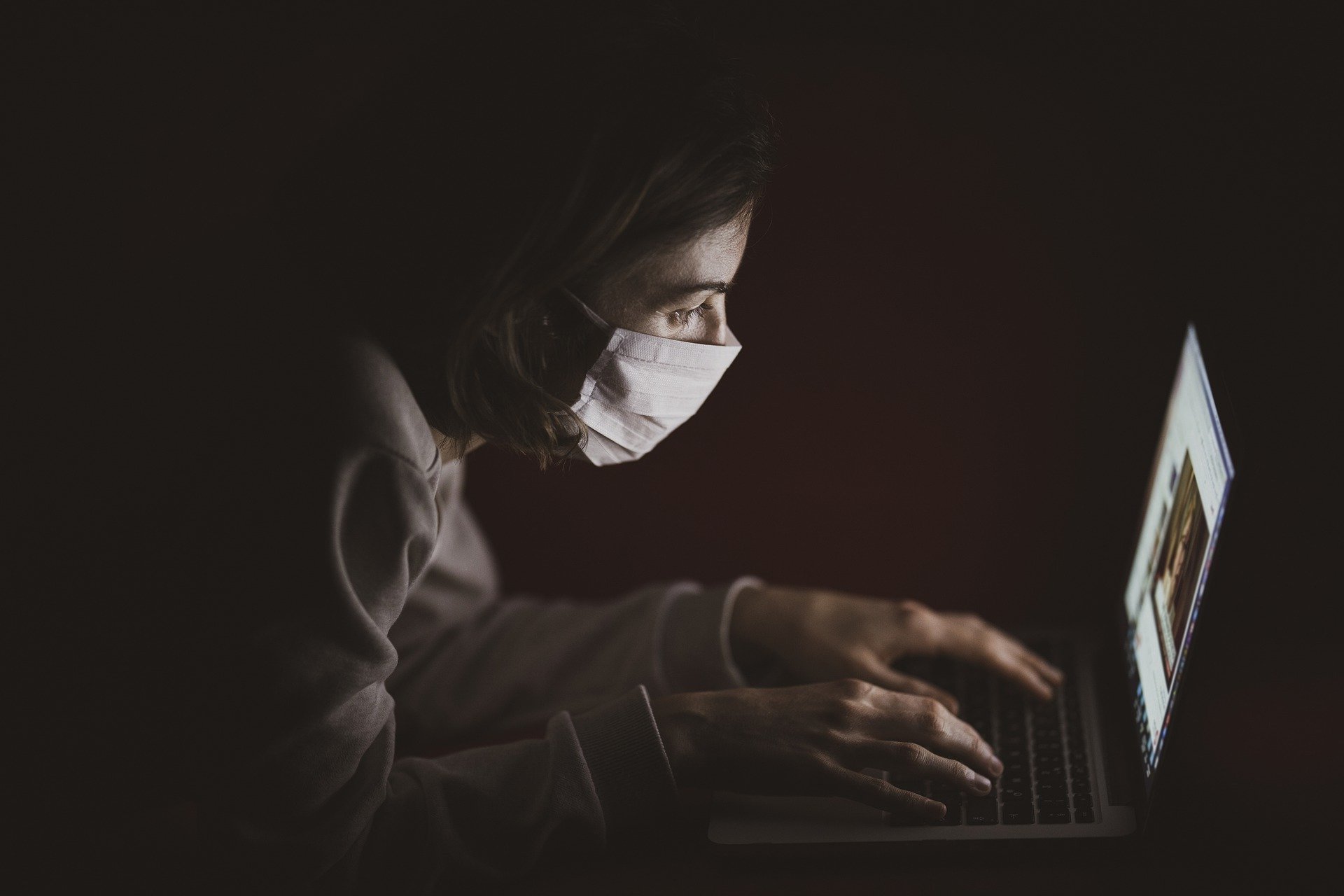
(Engin Akyurt por Pixabay)
The loss of a job doesn’t just create economic insecurity, it can also produce psychological stress and a diminished sense of self-worth. Covid-19 is likely to leave startling numbers of Americans feeling bereft. Social isolation may provide welcome solitude for a while (at least for those who can half-afford it). Before long, though, it will likely disorient people, particularly the elderly and those who are alone and cut off from friends and family, not to speak of exercise, eating out, or even trips to the local library. Zoom and Skype won’t, in the long run, qualify as the real deal. Well before Covid-19 made its appearance, the Health Resources and Services Administration (HRSA) reported that a fifth of Americans already felt isolated and two out of five claimed to lack “meaningful” social networks.” Loneliness, the HRSA concluded, had become an “epidemic” — and that was before an actual epidemic hit. Medical professionals concurred at the time. Imagine what they’d say now.
Among other things, the coronavirus experience will undoubtedly increase the risk of suicide (especially given the rush to purchase weaponry), already at epidemic levels. In 2017 alone, 47,000 Americans killed themselves. By then, suicide had already become the 10th leading cause of death in the United States, claiming more lives than homicides or motor vehicle accidents. The suicide rate has increased for the last 13 years straight. Among youth, it has jumped 56percent in the past decade alone, among blue-collar workers by 40 percentin less than two decades. Sixty thousand veterans have died by their own hand since 2008, a suicide rate 1.5 times higher than for other adults.
By ratcheting up stress, dejection, and isolation, Covid-19 could also increase domestic violence, the neglect and mistreatment of children, and drug and alcohol abuse, especially among recovering addicts. Globally, the virus has also turbocharged demagogues, for whom the pandemic provides an opportunity to commit hate crimes and engage in scapegoating, racial tropes, and weird conspiracy theories, while using social media to whip up fear, suspicion, and animosity, and deepen social divisions. Admittedly, such problems can’t all be chalked up to the pandemic. Still, they could all get worse as this insidious virus continues to wreak havoc.
Now for the Good Part
Crises highlight and exacerbate a society’s problems, but they also put some of its best attributes on display. Covid-19 hasn’t been an exception. Doctors, nurses, hospital staff, and first responders knowingly endanger their lives daily to care for those sickened by the virus. By April, 25,000 healthcare workers from other parts of the country had converged on New York State, the pandemic’s epicenter, to help. Volunteers have mobilized nationwide to sew masks for hospital workers, stepping in where the government has failed. People have found ways to help elderly neighbors. Strangers have been engaging in acts of kindness and generosity toward one another — an acknowledgement that we confront a shared problem that will consume much more than our livelihoods if we don’t stand together (social distancing aside). Civic groups, non-profit organizations, and companies are pitching in to help in a variety of ways. Governors — Andrew Cuomo of New York, Mike DeWine of Ohio, Larry Hogan of Maryland, Gavin Newsom of California — have been working tirelessly to protect their states, showing that not all parts of the political system are as dysfunctional as Washington, D.C., today.
At some point, we’ll emerge into a different world. What it will be like no one can yet know. Covid-19 has certainly created much despair but reasons for gratitude and admiration as well — something to keep in mind as this terrible stress test continues without letup.
Rajan Menon, a TomDispatch regular, is the Anne and Bernard Spitzer Professor of International Relations at the Powell School, City College of New York, senior research fellow at Columbia University’s Saltzman Institute of War and Peace Studies, and a non-resident fellow at the Quincy Institute for Responsible Statecraft. His latest book is The Conceit of Humanitarian Intervention.
This article is from TomDispatch.com
The views expressed are solely those of the author and may or may not reflect those of Consortium News.
Please Donate to Consortium News.
Before commenting please read Robert Parry’s Comment Policy. Allegations unsupported by facts, gross or misleading factual errors and ad hominem attacks, and abusive or rude language toward other commenters or our writers will not be published. If your comment does not immediately appear, please be patient as it is manually reviewed. For security reasons, please refrain from inserting links in your comments, which should not be longer than 300 words.

The article is wrong to suggest that we can remake society by simply being nice to each other and voting for the other duopoly candidate, as though we had a democracy. This has zero effect on our corrupt government: with US mass media and elections controlled by gold, the tools of democracy are not available to restore democracy. We are no longer the isolated colonies of a faraway monarchy.
While “not all parts of the political system are as dysfunctional as Washington, D.C.” those scattered better fragments are not willing nor able to help us “emerge into a different world” because that would require organization in militant defiance, for which they are not even close in knowledge, principles, or courage. Only the risk of great and immediate personal loss to most of the people will force them to make the major personal sacrifices needed to restore democracy. We may see such suffering, but my guess is that it will be far too little, and the people far too willing to cower behind their propaganda screens and watch circuses as their compatriots die, to restore democracy.
I agree, Sam F, with your summation.
Would only add that in this age of smartphones, when even during “normal” times family members, couples, friends, albeit together for a celebration, an evening out (or in) are each glued to their screens and not in any perceptible, conceivable way “together.” How do you get ordinary people to rise up against the corporate-capitalist-imperialist, avarice ridden, warmongering ruling power if they have lost that social connectedness? Are isolated in their own ether-world and not here in the really existing one, not now?
You’d think that this electronic isolation was conceived of and deliberately created in the nation’s and ruling power’s labs and think tanks *in order* to prevent any such collective and cohesive coming together of the vox populi to rise up against their oppressors, their greed ridden, plutocratic, militaristic economic-political rulers.
@Anne, that is an interesting point, that our escapism denies us the means to escape from tyranny. That the formalism of digital communication does not bring us together in values, pursuits, and the sense of common purpose. That it prevents any “collective and cohesive coming together” of the people, as in meetings and demonstrations. Much like virus quarantines.
In January, China clearly knew it had a problem when it shut down Wuhan and many other cities and told workers to stay home.
You don’t need sophisticated intelligence agencies to figure out that the disease could spread.
South Korea acted fast and, like China, prevented spread in those countries. Proof is that Chinese workers are back at work.
This is blaming China for American leadership criminal negligence snd ineptitude.
I could live with out the drama so prevalent in this article, and too often Mr Menon seems more interested in a dramatic literary style then anything else. I’m a New Yorker, and at this point in time I don’t need it. I know people who have died from it, and I don’t need it. We could have done this, we could have done that, and it’s more or less all Trump’s fault. Gee that kind of rhetoric is spewed all over multiple Facebook sites. We could play the blame game here, but I’m not buying it, since the Bush/Cheney, and Obama administrations didn’t help to prepare us for such a pandemic which of course in retrospect seems careless. Well, I guess during their administrations we just got more involved in killing people. I can’t remember any journalist fussing over the possibility of a future pandemic, but I’m sure somewhere there was someone who saw it as a real possibility. At this point in time I don’t want to go on a Trump attack . I could go to CNN for that, and I definitely would prefer a more optimistic outlook. The good part was too small.